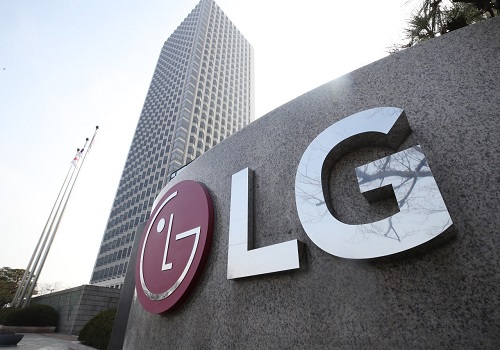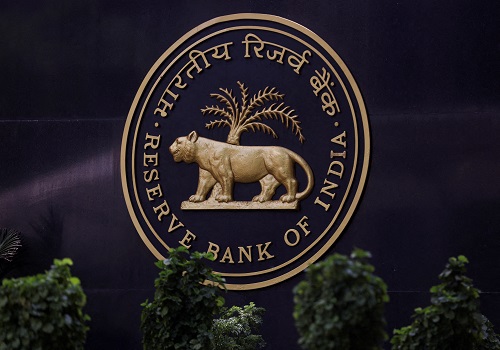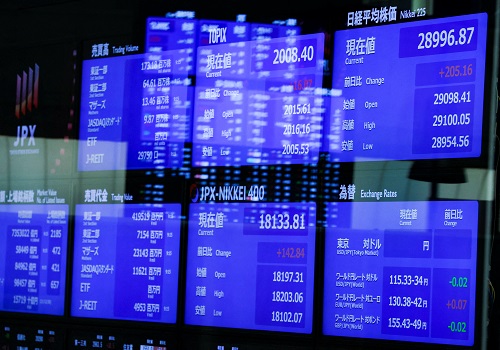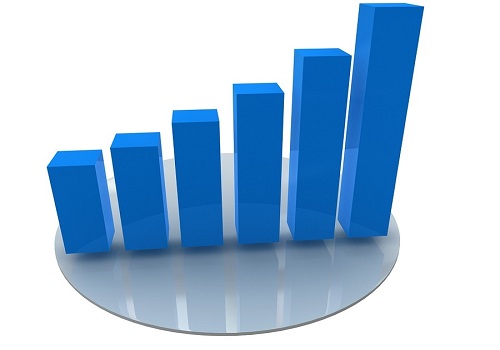Jeera trading range for the day is 23070-25430 - Kedia Advisory

Follow us Now on Telegram ! Get daily 10 - 12 important updates on Business, Finance and Investment. Join our Telegram Channel
Gold
Gold prices exhibited marginal gains, closing up by 0.02% at 70736, as investors continued to analyze the implications of the Federal Reserve's policy decision. Chair Jerome Powell's remarks indicated a dovish stance, suggesting that the next move by the central bank is unlikely to be a rate hike. However, Powell also expressed the need for increased assurance regarding declining inflation, acknowledging a reduced level of confidence compared to previous assessments. Market sentiment regarding the Fed's rate cuts has shifted due to robust economic data and ongoing inflationary pressures. Geopolitical tensions in the Middle East eased, diminishing gold's safe-haven appeal amidst optimism for a ceasefire agreement between Israel and Hamas brokered by Egypt. Despite this, global gold demand saw a 3% increase in the first quarter of the year, marking the strongest start since 2016. India's gold demand in the March quarter rose by 8% year-on-year, but recent price rallies may dampen total consumption for 2024, according to the World Gold Council (WGC). Technically, the gold market experienced short covering, with a decrease in open interest by -2.84%, settling at 18039. Prices saw a modest increase of 11 rupees. Gold is currently finding support at 70260, with a potential test of 69790 levels. Conversely, resistance is likely to be encountered at 71240, with a move above potentially testing 71750 levels. Overall, market dynamics, including Fed policy outlook and geopolitical developments, will likely influence gold prices in the near term.
Trading Ideas:
* Gold trading range for the day is 69790-71750.
* Gold settled flat as investors continued to assess the Federal Reserve’s policy decision.
* Fed maintained its interest rates at current levels, as widely expected
* Fed Chair Jerome Powell noting that it was unlikely that the central bank’s next move would be a rate hike.
Silver
Silver prices rose by 0.17% to settle at 81363 due to expectations that the Federal Reserve would maintain higher interest rates for a longer period. However, the Federal Reserve left interest rates unchanged and indicated that future rate moves would depend on economic data, with little likelihood of rate hikes in the near term. This caused traders to scale back their expectations for the Fed's first rate cuts this year. Additionally, silver's appeal as a safe haven diminished as geopolitical tensions in the Middle East eased, with expectations of a ceasefire agreement between Israel and Hamas. The Silver Institute industry association predicts that the global silver deficit will rise by 17% to 215.3 million troy ounces in 2024. This is due to a 2% growth in demand driven by robust industrial consumption and a 1% fall in total supply. Silver is used in various industries such as jewelry, electronics, electric vehicles, and solar panels. Despite the deficit falling by 30% last year, it still remained high at 184.3 million ounces. Global supply has remained steady at around 1 billion ounces, while industrial demand saw impressive growth of 11%. Technically, the market is under short covering, as open interest fell by 0.61% to settle at 23855 while prices rose by 136 rupees. Silver is now receiving support at 80555, and a move below could see prices test 79745 levels, while resistance is now likely to be seen at 81895, with a move above potentially seeing prices test 82425.
Trading Ideas:
* Silver trading range for the day is 79745-82425.
* Silver steadied on expectations Fed would maintain higher interest rates for a longer period.
* Fed Chair Jerome Powell indicated that any future rate moves would depend on economic data
* Silver's appeal as a safe haven diminished as geopolitical tensions in the Middle East eased
Crude oil
Crude oil fell -0.32% to 6601 yesterday as stocks recovered, supporting supply, and prospects of a Middle Eastern truce lowered the commodity's risk premium. Crude oil inventories in the United States rose by 7.265 million barrels in the week ending April 26th, the sharpest increase since early February, erasing the previous week's 6.368 million barrel decline and defying market expectations of a 2.3 million barrel decline, according to the EIA Petroleum Status Report. Crude stockpiles at the Cushing, Oklahoma, delivery hub increased by 1.089 million barrels to offset the previous week's 0.659 draw. Meanwhile, petrol supplies rose by 344 thousand barrels, reducing last week's 634 thousand barrel draw, while distillate stocks, which include diesel and heating oil, dipped by 732 thousand barrels, after a 1.214 million barrel surge. Furthermore, the EIA said that US crude oil output increased to 13.15 million barrels per day in February, up from 12.58 million in the previous month, marking the highest monthly gain in almost three and a half years. In the Middle East, Egypt spearheaded attempts to restart stalled peace talks between Israel and Hamas, lowering the chance of a regional confrontation. Technically, the market is in long liquidation, as open interest has dropped by 4.21% to settle at 12828, while prices have fallen by -21 rupees. Crude oil is now receiving support at 6548, and a move below could see prices test 6494 levels, while resistance is now likely to be seen at 6667, with a move above potentially seeing prices test 6732.
Trading Ideas:
* Crudeoil trading range for the day is 6494-6732.
* Crude oil dropped amid a rebound in stockpiles and hopes of a ceasefire in the Middle East.
* Crude oil inventories in the US surged by 7.265 million barrels on the week ending April 26th.
* Crude stocks at the Cushing, Oklahoma, delivery hub jumped by 1.089 million barrels to make up for the 0.659 draw.
Natural gas
Natural gas prices surged by 4.42% to settle at 170 amid forecasts predicting increased demand for the commodity next week. This uptick in demand is partly attributed to higher feedgas flow to liquefied natural gas (LNG) export plants. Notably, US utilities injected 59 billion cubic feet (bcf) of gas into storage during the week ended April 26, exceeding market expectations and marking the fourth consecutive week of increases. Gas stocks now stand at 2,484 Bcf, significantly higher than last year and above the five-year average. The decline in US gas production by approximately 10% in 2024, primarily due to delayed well completions and reduced drilling activities after price declines earlier in the year, has contributed to the market dynamics. Major energy firms like EQT and Chesapeake Energy have adjusted their operations in response to market conditions. LSEG reported a decrease in gas output in the Lower 48 US states, further supporting the bullish sentiment in the market. Meteorologists' projections of warmer-than-normal weather across the Lower 48 states until May 10, followed by near-normal levels, are also influencing market sentiment. Technically, the market is experiencing short covering, with a significant drop in open interest by -16.43% and a corresponding increase in prices by 7.2 rupees. Natural gas is currently finding support at 165.3, with a potential test of 160.6 levels. Resistance is likely to be encountered at 172.8, with a move above potentially testing 175.6 levels. Overall, the combination of demand forecasts, storage data, production trends, and weather projections will continue to shape the natural gas market in the coming days.
Trading Ideas:
* Naturalgas trading range for the day is 160.6-175.6.
* Natural gas prices rose due to increased feedgas flow to LNG export plants.
* US gas production has dropped by around 10% in 2024 due to delayed well completions.
* Gas output in Lower 48 states has fallen to an average of 95.7 billion cubic feet per day in May.
Copper
Copper prices experienced a decline of -1.13%, settling at 845.95, driven by profit-taking among commodity funds and cautious sentiment regarding US manufacturing prospects. The unexpected contraction in US factory activity for April, as indicated by ISM data, dampened earlier optimism about the sector's recovery, impacting the outlook for base metals. Despite this setback, prices remained substantially higher, nearly 30% above their lowest point this year, buoyed by supply disruptions such as the suspension of operations at Cobre Panama, power cuts in Zambia affecting key mines, and potential output cuts by Chinese smelters due to lower margins. Furthermore, industry dynamics saw a shift towards M&A activities instead of initiating new projects, exemplified by BHP's attempt to acquire Anglo American, highlighting the challenges and costs associated with committing to new mines. However, the long-term bullish outlook for copper demand persisted, driven by its crucial role in electrification projects globally. Amidst this backdrop, the Federal Reserve's inclination towards eventual interest rate reductions, contingent on gaining "greater confidence" in declining inflation, added another layer of complexity to market dynamics. Meanwhile, China's copper producers announced plans to export a significant volume of metal, the largest in 12 years, aimed at tempering the rally in prices that approached record highs, which had strained their order books. Technically, the market witnessed fresh selling, with open interest surging by 20.72% to settle at 6870 contracts, while prices saw a decline of -9.65 rupees. Presently, copper finds support at 839.2, with a potential downward breach leading to a test of 832.3 levels. On the upside, resistance is anticipated at 857.1, with a move above potentially pushing prices to test 868.1 levels.
Trading Ideas:
* Copper trading range for the day is 832.3-868.1.
* Copper fell as commodity funds took profits and assessed the outlook of US manufacturing.
* Factory activity in the US unexpectedly contracted in April
* China's copper producers are planning to export up to 100,000 metric tons of metal, the largest volume in 12 years.
Zinc
Zinc prices surged by 1.22% to settle at 256.85, driven by concerns over supply disruptions and optimism surrounding China's economic recovery. The global zinc market witnessed a widening surplus, reaching 40,100 metric tons in February, compared to 12,300 tons in January, as reported by the International Lead and Zinc Study Group (ILZSG). This surplus trend continued into the first two months of the year, totaling 53,000 tons, contrasting sharply with a deficit recorded in the same period last year. Supply disruptions at Nyrstar's Budel smelting operations in the Netherlands contributed to the bullish sentiment. The resumption of zinc production at Budel, scheduled for the week of May 13, was driven partly by higher prices for the metal, particularly due to its use in galvanizing steel. Despite the restart being at reduced capacity, it reflects optimism about zinc demand. China's refined zinc production also played a significant role, with a month-on-month increase of 4.57% in March. The country's total output from January to March exceeded expectations, aligning with positive factory activity data indicating an expansion at the fastest pace in over a year. Technically, the market witnessed fresh buying, evidenced by a notable increase in open interest by 16.86% to settle at 3882, accompanied by a price increase of 3.1 rupees. Zinc is currently finding support at 253.3, with a potential test of 249.8 levels. Resistance is likely to be encountered at 259.2, with a move above potentially testing 261.6 levels.
Trading Ideas:
* Zinc trading range for the day is 249.8-261.6.
* Zinc gains amid supply disruption concern and optimism around China's economic recovery.
* The global zinc market surplus widened to 40,100 metric tons in February from 12,300 tons in January
* Zinc production at Nyrstar's Budel smelting operations in the Netherlands will resume
Aluminium
Aluminium prices dipped by -1.76% to settle at 231.95 amid concerns over slower manufacturing growth in China, the largest consumer of the metal. The market also reacted to measures by Washington and London to prohibit the acceptance of new Russia-made aluminium, copper, and nickel by major exchanges. Continued notifications from investors to remove metal from LME-registered warehouses further tightened aluminium stocks, reaching the lowest level since August 2022 at 171,200 tonnes. China's increased imports of unwrought aluminium and products, up by 89.8% in March and totaling 1.1 million tons in the first quarter, underscored robust demand. Despite this surge, China's primary aluminium output also saw a significant increase of 7.4% in March, reaching 3.59 million metric tons, driven by rising metal prices and growing industry profits. Manufacturing activity in China expanded for the first time in six months, fueled by demand for aluminium in various sectors including automotive, construction, and packaging. Technically, the market witnessed fresh selling, with open interest edging up by 0.14% to settle at 4311 contracts, while prices experienced a decline of -4.15 rupees. Presently, aluminium finds support at 229.1, with a potential downward breach leading to a test of 226.1 levels. On the upside, resistance is anticipated at 236.2, with a move above potentially pushing prices to test 240.3 levels. These technical indicators suggest a cautious market sentiment amidst supply concerns and fluctuating demand dynamics, highlighting the delicate balance influencing aluminium prices in the near term.
Trading Ideas:
* Aluminium trading range for the day is 226.1-240.3.
* Aluminium prices dropped amid slower manufacturing activity growth in top consumer China.
* LME aluminium stocks reduced to 171,200 tonnes, representing the weakest level since August 2022.
* China's March aluminium imports jump 90% on – year
Cottoncandy
Cottoncandy prices edged up by 0.28% to settle at 57280, driven by robust demand for Indian cotton from buyers in countries like Bangladesh and Vietnam. The USDA's weekly export sales report revealed a significant surge in net sales for the 2023/2024 season, up 79% from the previous week, indicating strong international demand. However, upside potential was capped by expectations of improved crop yields in countries such as Australia. Looking ahead, the International Cotton Advisory Committee (ICAC) projects an increase in cotton-producing area, production, consumption, and trade for the next season, 2024-25. Despite this positive outlook, India is expected to witness a decline in cotton stocks to their lowest level in more than three decades, primarily due to lower production and rising consumption. This reduction in stockpiles could constrain exports from India, the world's second-largest producer, and lend support to global prices, albeit potentially impacting domestic textile companies' margins. For the marketing year 2024/25, India's cotton production is estimated to decrease slightly to 25.4 million 480 lb. bales, with farmers possibly shifting acreage to higher-return crops. Conversely, mill consumption is forecasted to increase, driven by improving demand for yarn and textiles in major international markets. Moreover, with the recent removal of import duties on extra-long staple (ELS) cotton, imports are expected to rise by 20%. Technically, the market witnessed short covering, with a drop in open interest by -0.26% alongside a price increase of 160 rupees. Presently, Cottoncandy finds support at 57040, with a potential downward breach leading to a test of 56790 levels. On the upside, resistance is anticipated at 57500, with a move above potentially pushing prices to test 57710 levels.
Trading Ideas:
* Cottoncandy trading range for the day is 56790-57710.
* Cotton gains as demand for India cotton continues to be strong from buyers
* India's cotton stocks set to plunge 31% y/y to lowest in decades
* Cotton stocks at the end of 2023/24 marketing year could fall to 2 million bales - CAI
* In , a major spot market, the price ended at Rupees dropped by percent.
Turmeric
Turmeric prices experienced a slight decline of -0.3%, settling at 19154, primarily due to expectations of new arrivals from the Marathwada region in Maharashtra. However, the downside was limited by below-normal supplies and active festive demand. New crop arrivals were reported in significant quantities in various markets, indicating an increase compared to the previous week. Despite the increase in arrivals, turmeric production for the 2023-24 season is estimated to be lower than the previous year, according to the Ministry of Agriculture and Farmers’ Welfare’s first advance estimate. Additionally, demand destruction has been observed as prices surged, with many consumers resorting to hand-to-mouth purchases. However, regions like Sangli, Basmat, and Hingoli are witnessing strong demand for quality turmeric on expectations of increased sowing area in the current year. Turmeric exports during Apr-Feb 2024 dropped slightly by 4.42% compared to the same period in the previous year, while imports decreased by 15.36%. Despite a rise in exports in February 2024 compared to January 2024, there was a drop in exports compared to February 2023. Technically, the market witnessed fresh selling, with a slight increase in open interest by 0.51%, while prices declined by -58 rupees. Turmeric is currently finding support at 18912, with a potential test of 18672 levels, while resistance is likely to be encountered at 19440, with a move above potentially testing 19728 levels.
Trading Ideas:
* Turmeric trading range for the day is 18672-19728.
* Turmeric dropped as new arrivals are expected from the Marathwada region in Maharashtra.
* However, downside seen limited amid below normal supplies and active festive demand.
* The Ministry of Agriculture first advance estimate for turmeric production in 2023-24 is estimated at 10.74 lakh tonnes
* In , a major spot market, the price ended at Rupees dropped by percent.
Jeera
Jeera prices surged by 5.52% to settle at 24570 as global buyers favored Indian jeera amidst tightening global supplies. However, the upside was capped by concerns of increasing arrivals in the market, with daily arrivals of 10000 to 12000 bags in Rajkot Mandi exceeding demand. New arrivals have been reported in Gujarat and Rajasthan, with significant increases in sowing areas contributing to record production estimates. In Gujarat, the sowing area expanded by 30-35% compared to last year, while Rajasthan also witnessed a similar increase of 35%. This surge in sowing areas, coupled with favorable weather conditions, is expected to double the production of cumin this year compared to the previous year. Trade analysts anticipate a substantial increase in cumin exports, reaching about 14-15 thousand tonnes by February 2024. However, despite the potential for increased exports, jeera exports during Apr-Feb 2024 witnessed a decline of 23.75% compared to the same period in the previous year. February 2024 specifically saw a drop in exports by 11.54% compared to January 2024 and by 3.49% compared to February 2023. These figures reflect the volatile nature of cumin exports, influenced by domestic prices and international market conditions. Technically, the market observed short covering, with a significant drop in open interest by -12.13% alongside a substantial price increase of 1285 rupees. Presently, Jeera finds support at 23820, with a potential downward breach leading to a test of 23070 levels. On the upside, resistance is anticipated at 25000, with a move above potentially pushing prices to test 25430 levels.
Trading Ideas:
*Jeera trading range for the day is 23070-25430.
* Jeera gains as global buyers preferred Indian jeera with tightening global supplies.
*There will be a huge increase in cumin exports, which will reach about 14-15 thousand tonnes in February 2024.
* New arrivals have started in Gujarat since last 20-25 days and new arrivals have started in Rajasthan also since last 15 days.
* In Jodhpur, a major spot market, the price ended at 25500 Rupees dropped by 0 percent.
Views express by all participants are for information & academic purpose only. Kindly read disclaimer before referring below views. Click Here For Disclaimer












 320-x-100_uti_gold.jpg" alt="Advertisement">
320-x-100_uti_gold.jpg" alt="Advertisement">









